When a start-up excitingly experiences enough growth to consider a solution for onboarding and compliance, a learning management software ticks the boxes of automating employee training and information delivery.
Alternatively, large, historied, traditional companies often prioritized ensuring compliance training first and never updated to new, more sophisticated solutions that would help them with the continued development of their workforce.
But in a world where people are accustomed to a curated “For You” page and information is available in quantities that were unheard of when PCs were first introduced to consumers, your employees’ need for effective, personalized skill training, coaching, and continued development past onboarding means making the switch to a new solution.
Behavior change for competency building
Reliably delivering information across an organization is an excellent foundational goal for any organization. Achieving this fundamental first step is an achievement, but it’s only the first step on a journey for an organization’s learning and development program.
Ultimately, today’s workforce demands an employee experience where they develop skills and competencies during their tenure at a company. This means going through an onboarding process and completing compliance training annually will only contribute to low morale and high attrition.
So what does it take for them to stay?
Personalization/relevance of training
We’re flooded with information everywhere we turn. According to the Harvard Business Review, information overload cost the U.S. economy $900 billion in 2009.
And it’s only gotten worse.
So why would you also subject your employees to unnecessary training and information?
Instead, tailor what they see based on their roles and responsibilities and make sure their time is used to address their growth opportunities instead of taking training courses for areas they already excel in.
So what are the features to get you there?
#1. Role-based home pages
Make sure the solution you choose can connect to your HR management system so the employee’s learning experience can be automatically tailored based on their title and team.
For example, suppose someone has just joined the customer service team. In that case, they’ll be assigned only the courses necessary for general compliance and to help them provide a stellar service experience in any customer interaction they may face. This could mean courses about the escalation process or regulating their emotions when the other party is heightened emotionally.
#2. Competency profiles
Another requirement you should include when looking for a new solution is the ability to evaluate every demonstrated person’s strengths and weaknesses compared to an ideal benchmark at scale. This information will take your employee development to the next level, enabling you to customize their course assignments automatically and see whether their courses translate into execution and skills.
Beyond looking at the individual level to tailor the learning experience, you can make more informed decisions about where to invest resources based on the strengths and weaknesses of various teams or the organization.
In this example, the West sales team is strong in rapport-building skills but struggling with negotiation. If we zoom out further, we can see that the sales organization as a whole could improve its negotiation skills. Based on this insight, the team can decide to develop a new course, run a workshop, or even bring in an expert in negotiations to motivate them.
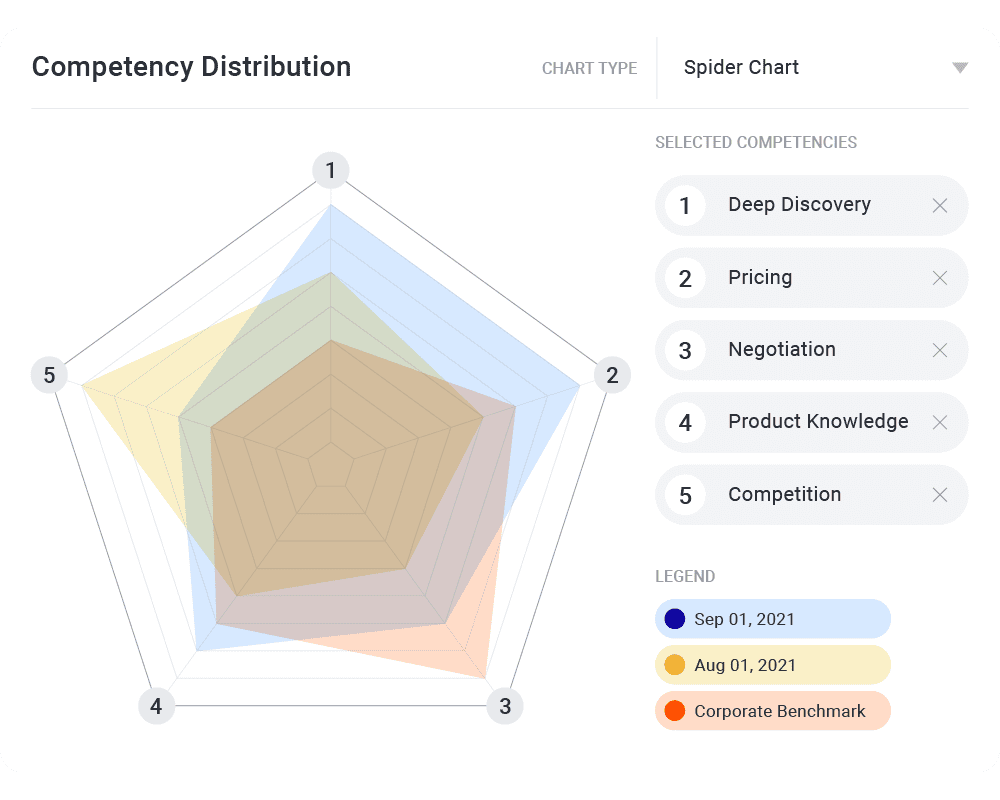
Changing behaviors for skill development
People don’t achieve new goals by doing what they’ve always done. It takes change. And it takes a concerted effort to make that change stick.
Give your employees tools that help them apply their learning through practice, and receive feedback quickly so they can practice and reinforce the right behaviors.
For example, if you have a junior HR employee with less experience than the rest of the team, have them go through a role-play exercise simulating a meeting to resolve a conflict between an employee and their manager.
Here’s what to look for.
#3 AI-powered role-plays
A safe environment to practice before the pressure of a real-life situation is crucial for desired behaviors to become second nature. Some interesting new point solutions provide an AI bot that will simulate a conversation with your employees to help them put the concepts they learned into practice.
However, finding a consolidated platform solution with this functionality is a better investment. The results from these role-play exercises can inform your employees’ competency profiles, with all the benefits mentioned above. They can also be used with the next feature to magnify the effects of your employees’ and managers’ efforts to improve.
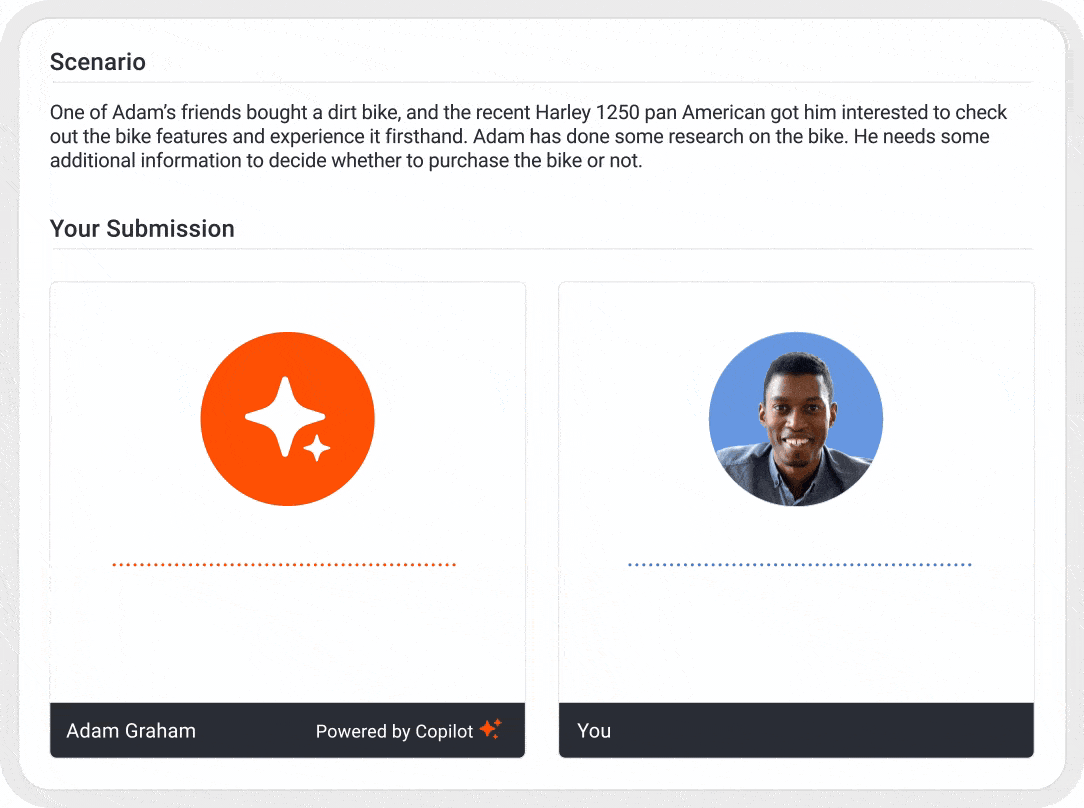
Investing in a culture of data-informed coaching
Practicing with AI-powered feedback will kick-start the behavior change process, but it can’t compare to consistent, high-quality coaching from a manager equipped with the skills and tools to mentor their teams.
Create a culture of excellence, transparency, and accountability around coaching and encourage a growth mindset in your employees. Set benchmarks for manager competencies and give them the training they need based on the strengths and weaknesses in their competency profiles.
What are the features to look for to get you there?
#4 Integrated coaching forms
As you coach the coaches, find a solution that gives your managers integrated coaching forms to guide their coaching sessions, assign tasks, and send reminders about conducting coaching sessions regularly. This feature should feel like it is woven into the rest of the platform by providing:
- Ways for your managers to watch and provide their feedback on role-play submissions
- The ability to assign courses to their team members
- If your organization records calls with customers and prospects, the option to bring those call recordings from real-life scenarios into coaching sessions
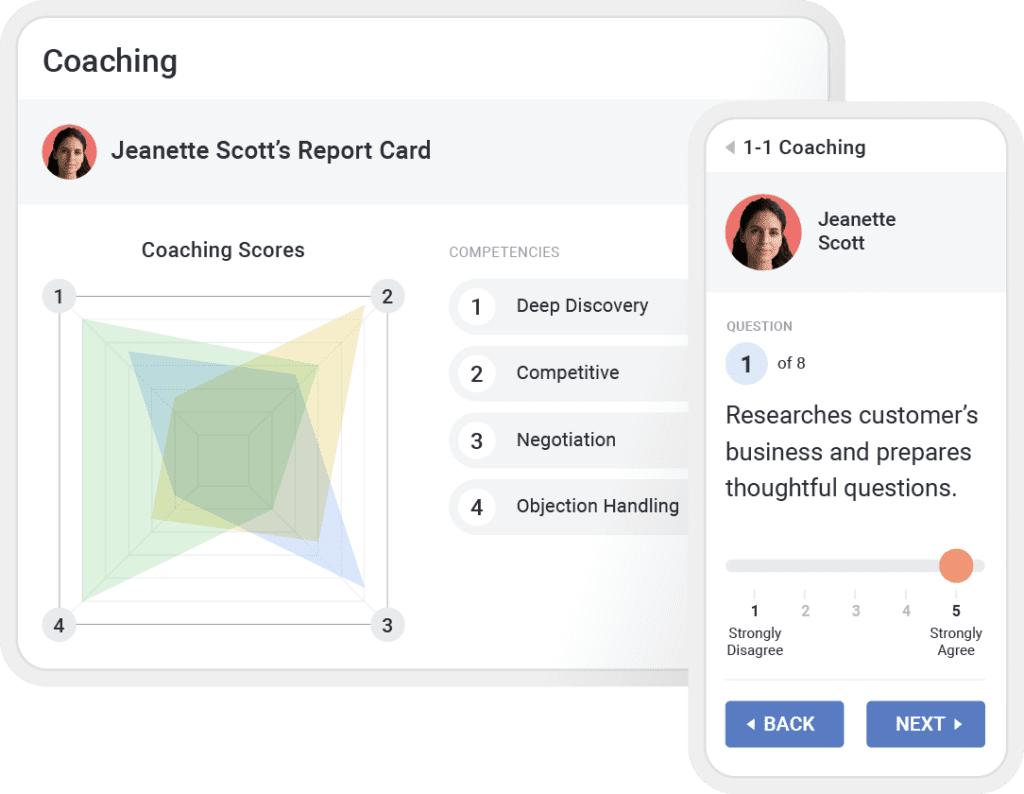
These aspects of the feature help employees understand what good looks like and see their progress toward their goals.
#5 Robust data and analytics
Hold your managers accountable by finding a solution with nuanced data from features like coaching forms, competency profiles, and all the table stakes data from foundational training features. Track the progress of each manager’s team over time, whether through the frequency and results of the coaching sessions, the changes in their competency profiles, or even in comparison to other top managers.
Relying on these metrics is better than relying on lagging indicators like employee satisfaction or retention rates, which forces leaders to react instead of proactively making decisions to improve the employee experience before they leave.
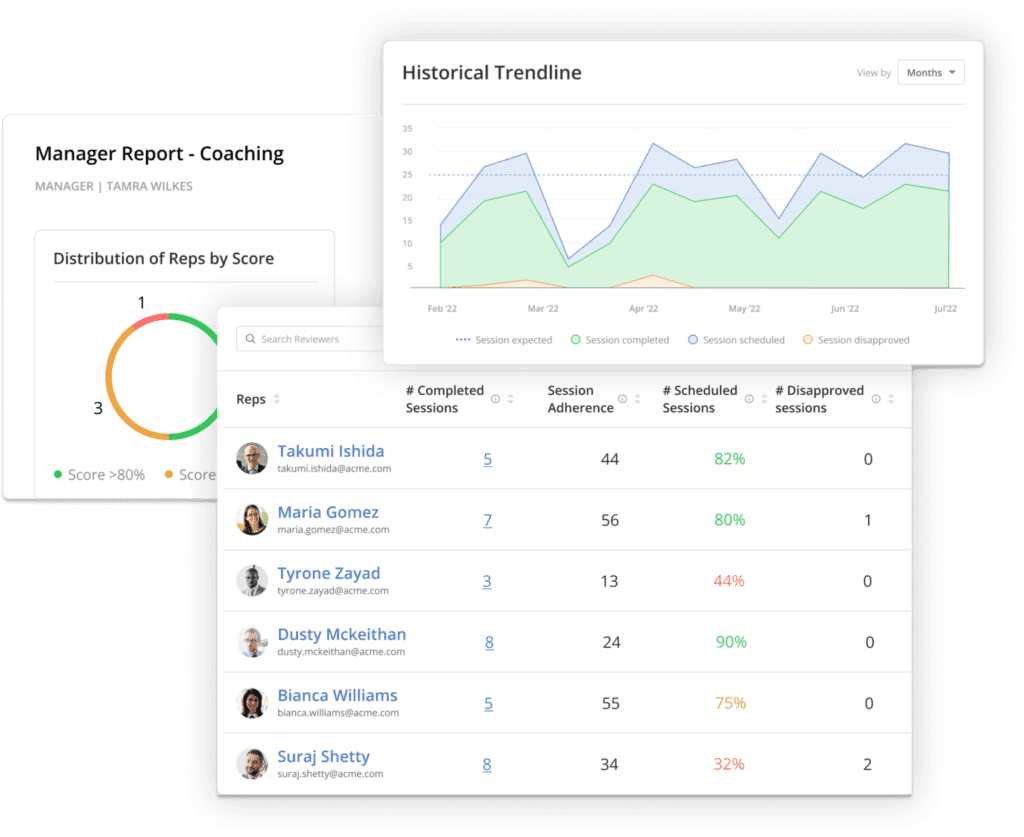
A world beyond LMS
Outgrowing technology is a great problem. When evolving past an LMS, consider consolidated readiness solutions to reap all the benefits of a one-stop shop for employees to learn, practice, receive coaching, and more.
Move Beyond Your LMS
Mindtickle is here to grow with the needs of every organization, from start-ups to enterprises. To see how take a look here or book a time with us for a more personalized demo.
Request a Demo

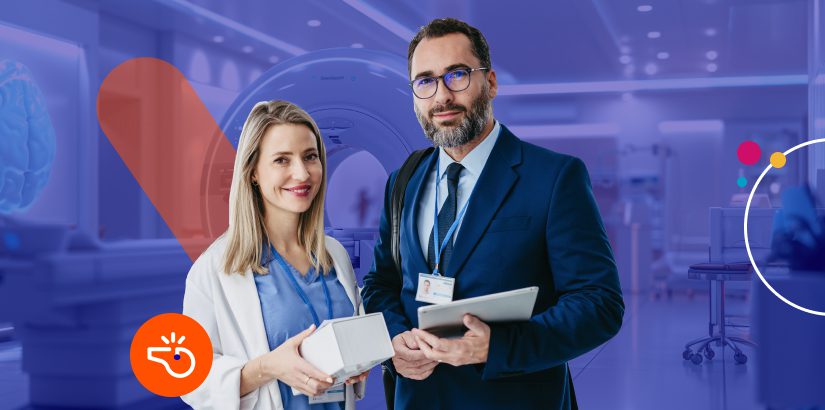
 By Christian Pieper
By Christian Pieper

 By Rahul Mathew
By Rahul Mathew